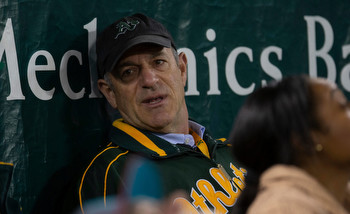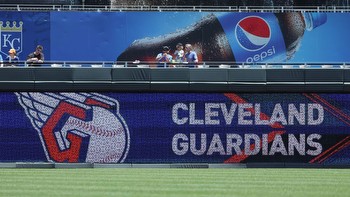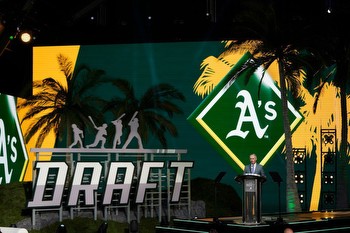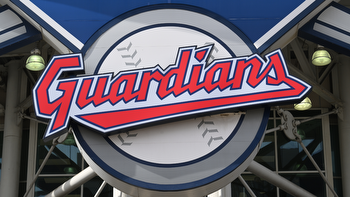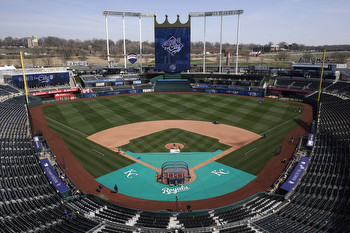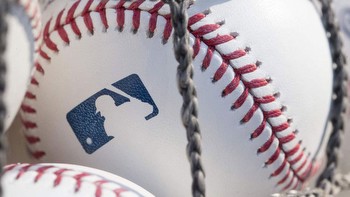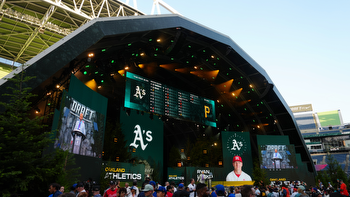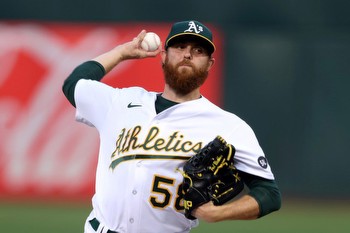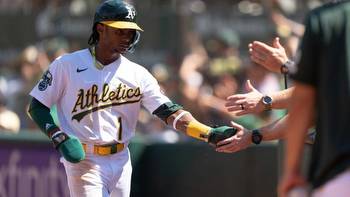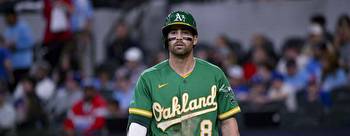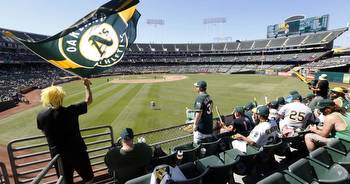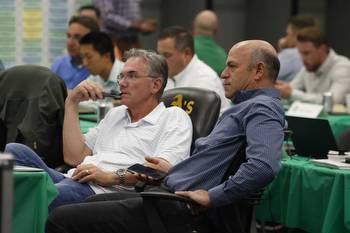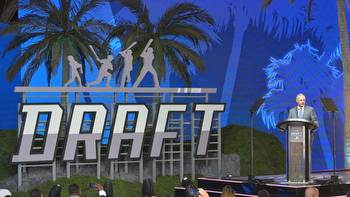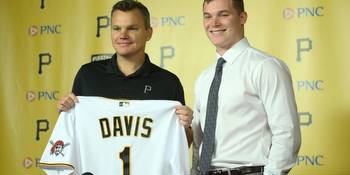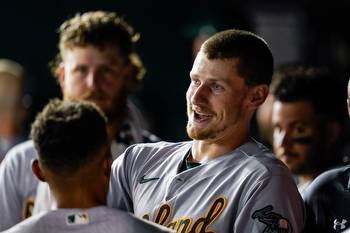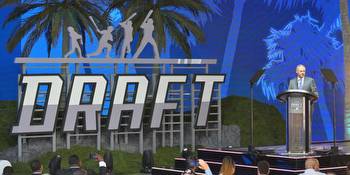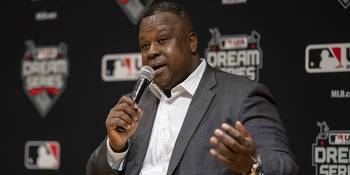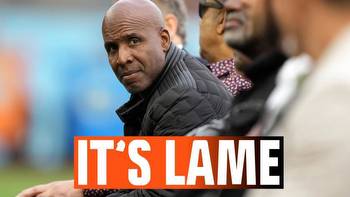Why the Oakland A’s on-field struggles could last for years
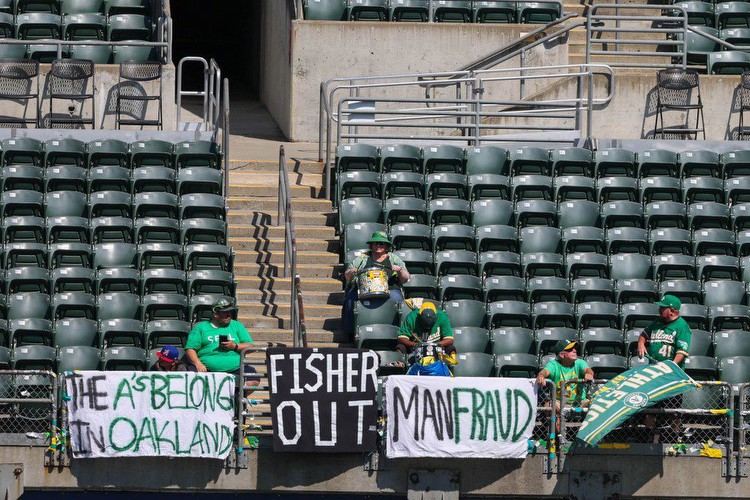
The A’s were historically bad this season while winding up with a hideous 50-112 record after losing Sunday’s season finale. Even worse, there’s little reason to believe things will get a lot better over the next few years.
The stench of losing like this won’t go away overnight.
History has shown it’s extremely difficult for a team to lose 112 or more games in a season. Somehow, John Fisher’s A’s made it look relatively easy for much of the year — at least for those who could bear to watch — while becoming just the eighth team in MLB’s 121-year-old Modern Era to lose 112 or more games.
As such, the A’s were one of the teams who experienced a clinching game this week. While the others celebrated division titles or playoff berths, there were no champagne bottles passed out when the A’s clinched the worst record in the majors for just the second time in their 55 years in Oakland – joining their 97-loss ’97 team.
Signs of trouble this season for the A’s organization were visible right away. No, we’re not talking about the T-shirts and hand-made posters imploring Fisher to sell the team. Those would come later. The tone of their season was set in April when the A’s had arguably the worst month any major league team had in any month in more than a century. Their 229 runs allowed were the most any team gave up in a month since the St. Louis Browns surrendered 232 in June, 1950. Oakland’s .179 winning percentage (5-23) in April was the worst of any team in any month since the 1915 Philadelphia A’s went 5-27 (.156) in a September not to remember.
How overmatched have this year’s A’s been? They were one more lopsided loss away from finishing with the worst run differential in baseball’s Modern Era. The A’s wound up getting outscored by 339 runs this season – only the 1932 Boston Red Sox (-345), 1915 Philadelphia A’s (-344) and 2003 Detroit Tigers (-337) have been worse over the past 122 years.
Here are three of the biggest reasons why the A’s may not show substantial improvement any time soon:
1. Their owner is John Fisher
One could say Fisher is too busy trying to change his team’s address to address its shortcomings on the field. However, he’s never shown an inclination to invest in the team more than minimally.
Ignoring the paradoxical business tenet of spending money to make money, Fisher has been content to continuously churn the team’s roster while suppressing payroll in a half-hearted attempt to win games.
(One redeeming quality to this year’s A’s was their perseverance throughout a disastrous season as they refused to give up or make excuses for their plight; Their owner could learn a thing or two about the team’s gumption).
Since buying the A’s nearly 20 years ago, the two biggest free-agent deals Fisher has approved were both modest and utterly disastrous. Billy Butler’s 3-year, $30 million deal in 2014 is the largest contract Fisher ever doled out. The free-agent deal with the highest average annual value under Fisher was an $11 million, 1-year contract for reliever Trevor Rosenthal, who was injured and never threw a pitch for the A’s.
Last month, during his first interviewssince becoming the A’s owner, Fisher showed he’s probably more overmatched than the low-budget ballclub he’s financing. Fisher lamented over somehow losing $40 million this year – this despite spending a major league-low $56.9 million on his team’s opening day payroll. Meanwhile, the New York Mets spent $353.5 million on this year’s opening day roster, six times as much as the A’s and almost $40 million more than Fisher spent on annual payrolls the past five years combined ($316 million), according to Cot’s Baseball Contracts.
None of numbers provide optimism for an A’s turnaround, especially when taking an even closer look. Since the start of baseball’s Wild Card Era in 1995, there have been 39 teams that finished with a 100-loss season. It’s taken those teams an average of about six years to recover and make the postseason.
If that trend continues for the A’s, they won’t be back in the playoffs until 2029. Wait, the A’s first season in Las Vegas is supposedly going to be in … 2029!
Maybe Fisher’s diabolical plan is working, after all.
2. The (lottery) odds are stacked against them
The easiest way to acquire top-end talent is to pick at or near the top of the MLB draft. Yet that path has become much more difficult since baseball, seeking a way to prevent teams from tanking for a top pick, instituted the draft lottery last year.
Just ask the A’s, who were the biggest losers in the inaugural lottery. Although they had the second-worst record last year (and shared the best winning odds with the Nationals and Pirates), the A’s wound up getting the sixth and final lottery pick.
Their luck was abysmal considering it was the most stacked draft in perhaps two decades, featuring five possible generational players who in a normal year would be chosen No. 1 overall – LSU stars Paul Skenes (a pitcher who went No. 1 to the Pirates) and outfielder Dylan Crews (No. 2, Nationals), Florida slugger Wyatt Langford (No. 4, Rangers) and prep outfielders Max Clark (No. 3, Tigers) and Walker Jenkins (No. 5, Twins).
Grand Canyon College shortstop Jacob Wilson, the A’s pick at No. 6, has elite bat-to-ball skills and is projected to be at least a decent major leaguer. But the talent drop off from the top 5 guys to Wilson seems steep.
There’s no guarantee the A’s will have better fortunes in the next draft lottery at the Winter Meetings, where MLB’s worst three teams — Oakland, Kansas City and Colorado — will share the same 16.5% odds of winning the No. 1 pick. First through sixth, no matter where the A’s pick lands, it will be their last lottery shot until at least 2026.
Among the new draft lottery rules are restrictions limiting how often teams can earn a lottery pick. The large market (or revenue-sharing) teams can’t participate in the lottery in consecutive seasons. Teams that receive revenue-sharing payments (such as the “small-market” A’s) can’t qualify for a lottery pick more than two years in a row.
Not that John Fisher will be complaining about not getting a lottery pick. He’s the guy who told ESPN that while getting a high draft pick may be seen as an opportunity, “It’s an expensive opportunity to sign high draft picks,” he said.
3. The kids have to grow up
There were a lot of factors leading to the A’s becoming the worst team in the majors this year, including youth and inexperience. But Oakland finishing last in the majors in runs scored, batting average, slugging percentage and OPS while also finishing second-to-last in pitching categories such as ERA, WHIP and runs allowed can’t be attributed to the A’s being MLB’s third-youngest team.
A talent gap clearly exists in Oakland. Yet there are prospects who’ve shown they could be part of an A’s revival at some point. Foremost among them is 22-year-old second baseman Zack Gelof (14 homers in 69 games), who could receive some Rookie of the Year votes after his slash line of .267/.337/.504. At the same time, management has probably identified Gelof as the player most likely to be dealt to the Atlanta Braves in three years for multiple prospects.
Those who figure to share space in the lineup with Gelof over the next couple of years include catcher Shea Langeliers, first baseman Ryan Noda, catcher/1B/DH Tyler Soderstrom and outfielders Lawrence Butler and Esteury Ruiz. Each of those players have shown flashes but there’s room for growth for each.
A’s fans looking for the next big thing will want to look up Triple-A shortstop Darell Hernaiz, a hard-hitting, 22-year-old acquired from Baltimore for starter Cole Irvin before the season. In 121 games over two levels, Hernaiz batted .321 with a .386 OBP to go nine homers and 71 RBIs.
Aside from Hernaiz, it may be a little while before other prospects make a big push for playing time with the A’s. Not a lot of prospect sites are sold on the A’s farm system — MLB Pipeline has Oakland’s farm system ranked as the fifth-worst in the game.
Regardless of rankings, youngsters will certainly play a big role in the A’s starting rotation next season. If Paul Blackburn isn’t traded in the offseason, he may be the only veteran starter. The A’s young pitchers – JP Sears, Ken Waldichuk, Mason Miller, Joe Boyle and Joey Estes – all showed glimpses of talent worthy of being in a big league rotation. The hard-throwing rookie duo of Miller and Boyle are the ones who’ve shown the most potential to lead a rotation.
A’S EARNING F’S
Here’s where the Oakland A’s ranked among MLB’s 30 teams this season in the following categories:
HITTING
Runs scored: 30th (585)
Batting avg.: 30th (.223)
OPS (on-base + slugging): 30th (.668)
On-base pct.: 29th (.298)
Slugging pct. 30th (.370)

